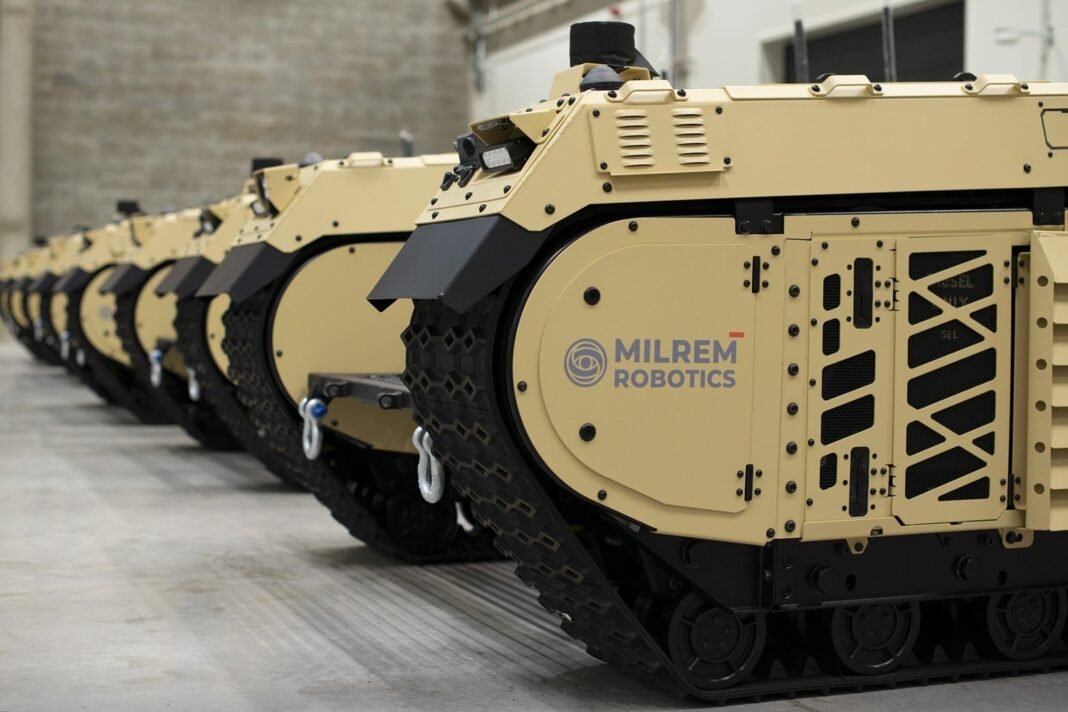Contents
Eastern Europe Proposes “Drone Wall” as a Defense Against Russian Aggression
In response to increasing Russian aggression, Eastern European nations are collaborating on an ambitious project known as the “drone wall,” a system comprised of sensors and counter-drone technology to bolster border security and deter aerial threats.
Lead: As tensions rise along the Eastern European border with Russia, a collaborative initiative is taking shape: the “drone wall.” This innovative project aims to use advanced technology to defend against drone incursions and is driven by nations that have historically faced Russian aggression. Spearheaded by defense experts and government officials, this strategic proposal highlights the importance of international cooperation in confronting security challenges stemming from Russia’s military actions.
Understanding the Drone Wall Initiative
The concept of the “drone wall” was proposed as a solution to increasing security threats posed by drones used in military conflicts, particularly following the recent war in Ukraine. Here are the key elements of this initiative:
– **Collaboration Across Nations**: Countries in Eastern Europe are coming together to create a unified defense system.
– **Technology at Work**: The wall will consist of an array of sensors, drones, and anti-drone systems strategically positioned along the Russian border.
– **Security and Deterrence**: The primary goal of this initiative is not only to prevent drone attacks but also to deter any form of aggression from Russia.
The Vision Behind the Drone Wall
Rene Ehasalu, the Cluster Manager for the Estonian Defense Industry Association, emphasized the necessity for cooperation in his discussion with Gizmodo. He noted that the current geopolitical climate requires countries to unite against potential threats, stating, “We want this to be an international project.”
### Why is This Project Important?
– **Historical Context**: The long and complicated border between Eastern Europe and Russia runs through diverse terrains, which present significant challenges for traditional defense strategies.
– **Response to Ongoing Threats**: The Ukrainian conflict has underscored the need for proactive measures as drone activities have dramatically increased.
– **Collective Strength**: Ehasalu believes that demonstrating collective strength can serve to dissuade further aggression from Russia.
Current Developments and Technological Innovations
In recent discussions, Interior Minister Lauri Laanemet of Estonia highlighted the uniqueness of this project, pointing out that “drone surveillance and anti-drone capability are crucial for deterrence.” The proposal envisions a multi-layered defense system utilizing various detection and countermeasure technologies.
### Components of the Proposed Drone Wall
– **AI-Powered Detection Systems**: The initiative aims to integrate artificial intelligence to enhance target recognition and detection capabilities.
– **Diverse Sensor Technologies**: Key technologies include:
– Acoustic Sensors
– Infrared Cameras
– Radio Frequency Detection
– Mobile Counter-Unmanned Aerial Systems (UAS)
This multi-layered approach is designed to maximize detection capabilities while minimizing human oversight, as Ehasalu explained, “Humans cannot see everything… AI can help us on that side.”
Allies and Industry Contributions
Several defense companies are stepping up to contribute to the initiative:
– **Rantelon**: An Estonian firm known for creating jammers that thwarted improvised explosive devices in Iraq is now looking to adapt similar technologies for drone defense.
– **Frankenburg Technologies**: This startup is focused on developing cost-effective miniature missiles for effective counter-drone measures, having already tested its solutions in Ukraine.
### Financial Considerations for the Drone Wall
Despite the excitement surrounding the project, funding remains a major hurdle. Ehasalu noted that there has yet to be a formal allocation of funds; however, there is optimism regarding increased defense spending across Europe.
– **Projected Investments**: The European Union plans to allocate $870 billion for defense over the next four years.
– **Germany’s Legislative Changes**: Recently, Germany voted to exempt defense spending from budgetary constraints, paving the way for significant military investments.
“We hope these allocations will not be stalled… because we need those capabilities really fast,” Ehasalu stated, underlining the urgency of the situation.
A Nation Motivated by History
Ehasalu’s insights reveal deep-rooted motivations for Eastern European nations to bolster their defenses. Having experienced Soviet oppression, these countries remain vigilant and committed to safeguarding their sovereignty.
– **Cultural Resilience**: The collective memory of past struggles against Russia fuels the motivation for military preparedness.
– **Legacy of the Soviet Union**: “We quite well know the Russians and see through their agenda. We are always prepared,” Ehasalu remarked, indicating a resolve born from historical experiences.
### The Path Forward
With international collaboration and a solid technological foundation, the vision of a “drone wall” could become a reality. However, the path ahead entails overcoming financial, logistical, and bureaucratic challenges.
Conclusion: As Eastern European nations pursue the ambitious goal of creating a drone wall, their unwavering commitment to collective security and anti-aggression measures will determine the future of stability in the region. The initiative symbolizes more than just a defensive perimeter; it represents a unified stand against potential threats while drawing from a painful but instructive history.
Keywords: Drone Wall, Eastern Europe, Russian Aggression, Defense Cooperation, Military Technology, Drones, AI, Estonia, Countermeasures
Hashtags: #DroneWall #EasternEurope #Defense #MilitaryTechnology #RussianAggression #AIDetection #CounterDrone #InternationalCooperation
Source link




